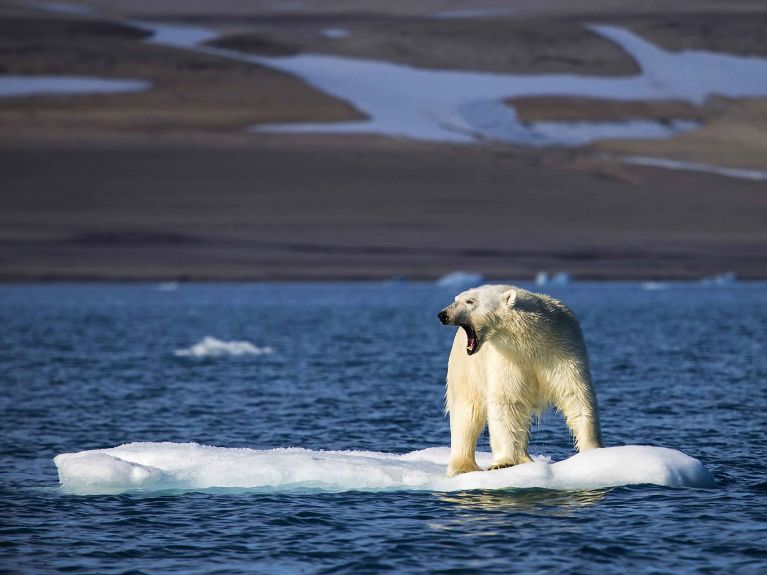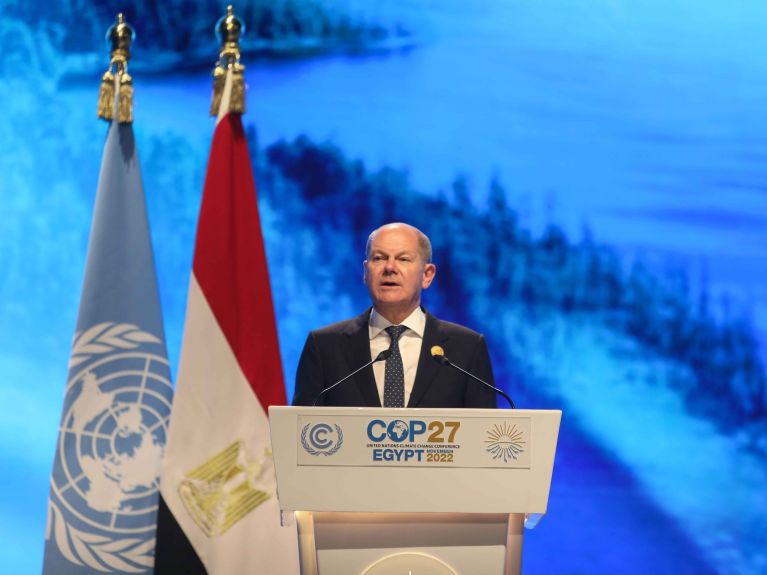Driving climate action from Bonn
The UN climate secretariat is based in Bonn in Germany and helps countries fight climate change, while also setting priorities.

International climate protection is a “slow and difficult process.” So said Simon Stiell, who has been head of the UN climate secretariat since 2022. The secretariat is based in Bonn in western Germany, and it has a unique and very important role. Stiell leads a team of 450 staff who come from over 100 countries. They not only organise climate conferences and help countries fight climate change, but also collect countries’ emissions data. This means that reliable data is available on how far the international community has come on climate change and how far they still have to go in order to achieve climate goals.
At the same time, the secretariat acts as a pacemaker, promoting greater cooperation and ambition. It forges partnerships with businesses, charities, NGOs and science in order to bring on board as many stakeholders as possible for the global task of protecting the climate. “Thirty years ago, states recognised that climate change is a problem which we must solve,” says Stiell. Yet he also has a warning: “time is running out,” he says. “We must move more quickly. Climate change won’t wait for us.”

The early days of climate conferences
Over three decades ago the World Meteorological Organization (WMO) held the first-ever global conferences on climate change in Geneva and Toronto, helping to put the issue on the international agenda. In 1988 the United Nations decided to set up an expert committee to gather the latest scientific understanding of the issue, and the Intergovernmental Panel on Climate Change or IPCC was born.
The panel published its first assessment report two years later. Back then, climate research was still in its early stages. The small number of computers in research institutions had computing power and storage capacities which look very modest indeed from a modern perspective. Despite this, the IPCC’s report was astonishingly accurate, and its fundamental findings were confirmed by all subsequent reports: climate change is caused by people. Curbing the rise in temperatures requires a swift and comprehensive reduction in emissions of greenhouse gases.
As a way of solving the climate problem, the first IPCC report recommended holding global climate conferences. The UN General Assembly took up this proposal and started negotiations for the climate change convention which was signed by 154 countries at the 1992 Earth Summit in Rio de Janeiro in Brazil and came into force two years later. Since then, 198 countries have signed the convention – almost all the countries in the world. The convention aims to prevent dangerous human interference with the climate system and to do so quickly enough to allow ecosystems to adapt naturally and for development to proceed in a sustainable manner.

Since 1995 the annual global climate conferences have been called “COP”, which is short for “Conference of the Parties” to the UNFCCC climate framework convention, UNFCCC stands for United Nations Framework Convention on Climate Change. The UN climate secretariat bears the same name. Its creation was agreed at the first conference in Berlin, though the secretariat prefers to call itself UN Climate Change.
The Climate Tower in Bonn, headquarters of the UN climate secretariat
The secretariat’s headquarters have been located in Bonn since 1996. Other cities which volunteered to host the HQ included Geneva and Toronto, which had hosted the first WMO conferences. That the vote went in Bonn’s favour is mainly thanks to the former Federal Chancellor Angela Merkel. At that time she was Federal Environment Minister and campaigned for Germany’s former capital to host the climate secretariat. Since then, a large UN campus has grown up in Bonn. Over 20 UN organisations are represented there and make use of buildings including “Langer Eugen”, which once housed the offices of members of the parliament of West Germany. The newly-built Climate Tower has served as headquarters for the climate secretariat since 2022.
Every spring a “small climate conference” is held on the campus to allow a few thousand participants to prepare for the major summit meeting at the end of the year. The major climate conferences regularly see over 20,000 people taking part. In addition to government delegations, representatives from civil society, business, academia, science and the media also attend.
While the climate secretariat organises the conferences, the host nation is in charge. It appoints the conference president, leads the negotiations and can set its own choice of priorities. The success of a conference therefore depends on the host’s skill as a negotiator. The role of the climate secretariat is just as its name suggests: it provides organisational and administrative support to allow progress to be made.


